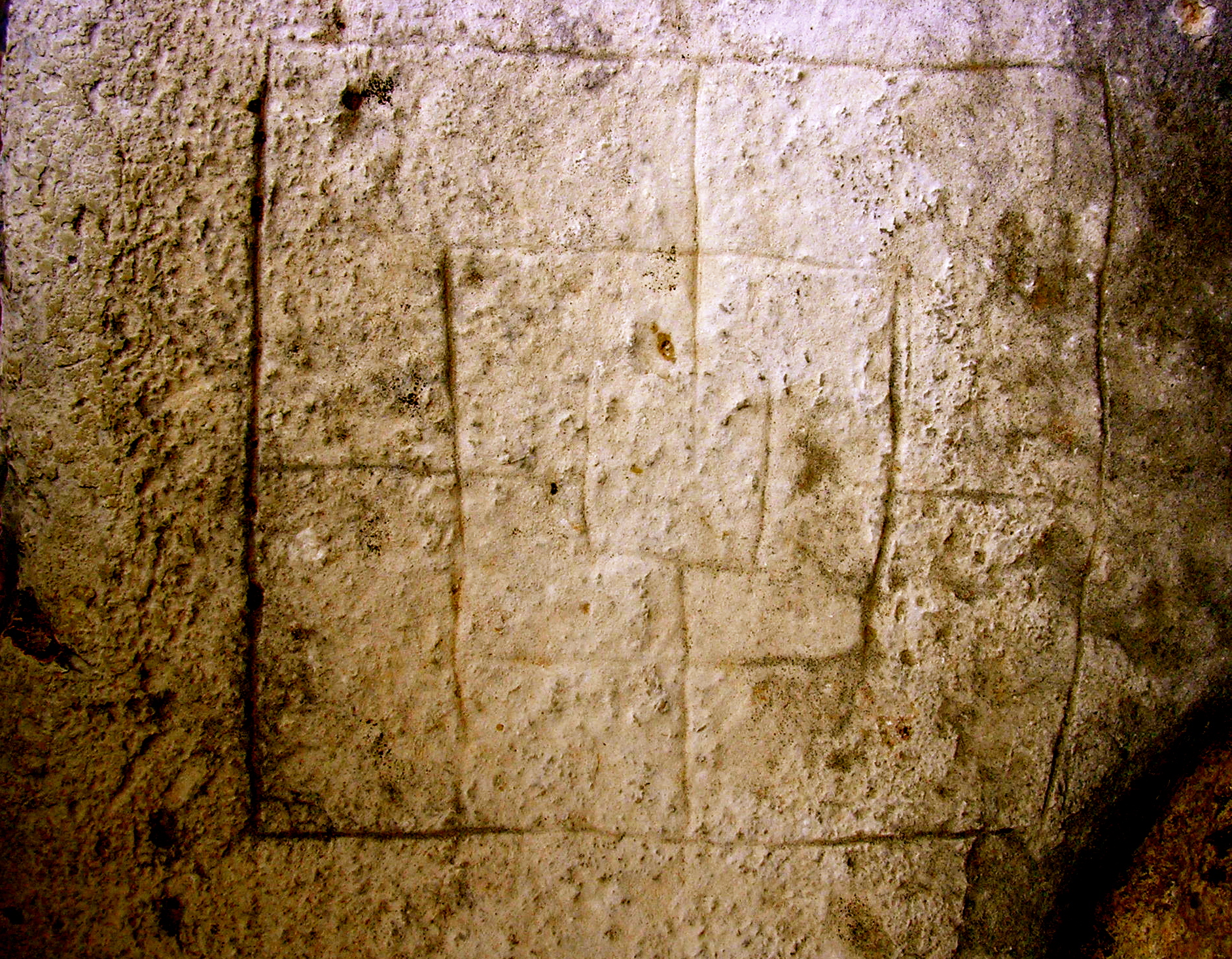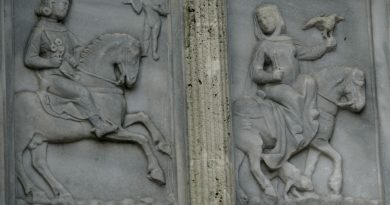Three concentric squares, from the Druids to the Knights Templar
Wandering among the medieval villages of Italy, I noticed a strange symbol carved on a stone, formed by three concentric squares, that epigraphists, iconologists and scholars of esotericism know as Magic Square or Three Concentric Squares.

The symbol, in fact, appears to represent three squares inside one another.
The characteristic of these squares is to be crossed by four lines in the form of a cross linking the three precincts. Together with connecting the three squares, the cross rejoins the perimeter of the innermost square.
I have observed that this enigmatic symbol seems to be found in close proximity to holy places.
For example, one is found near Cocullo, the small Italian hillside town near L’Aquila (Abruzzo), well known throughout the world for the famous rite of the Snake Charmers which is held regularly every first Thursday of May.
In the case of Cocullo, the symbol of the three concentric squares is engraved on the stone benches that flank the entrance of the medieval church of Santa Maria delle Grazie (see photo) in the main square of the village.
But it is not uncommon to find this same symbol within medieval churches, perhaps engraved on the plaster of a votive fresco, near crosses, coats of arms or signatures of devotees.
It may also be found engraved on columns, jambs, lintels and floors of churches that were frequented by devotees and pilgrims in the Middle Ages.
It is curious that the symbol of the three concentric squares had already been referenced in the ancient Celtic tradition. In 1800 at Suèvres (Loir-et-Cher) the symbol was discovered on a Druid stone. According to some scholars like E.C. Florance and P. Le Cour, the place where the stone was found may have been the sacred site where the Druids met for their traditional annual reunion and could represent a triple sacred precinct. Like many other Celtic symbols, this sign remained in use until the Middle Ages.

The three concentric squares would seem, therefore, to represent an ancient symbol of sacred geometry, although other scholars believe that instead the engraving in question might simply represent a game, something similar to the Italian filetto (“tic tac toe”) or to the game of checkers.
To help confirm the aspect of sacredness and the symbolic meaning of this magic symbol, we have the example of its presence among the engravings at the dungeon of Chinon (the place where the Knights Templar were imprisoned due to an unjust accusation of heresy at the behest of the French king Philip the Fair).
The thesis of Rene Guenon is also quite interesting. According to his hypothesis, the symbol of the three concentric squares represents the three degrees of initiation of traditional hierarchies, common to several esoteric schools of thought.
The four lines, which in Christian code may represent the four rivers of Eden, would be equivalent in esoteric code to channels through which the teaching of traditional doctrine could be transmitted hierarchically, through successive levels of knowledge. In fact, the four lines meet at the center of the three concentric squares, where the innermost square might represent the supreme “level of attainment”.
In light of this interpretation, the presence of the symbol of the three concentric squares in various churches and medieval cathedrals is undoubtedly clearer and more coherent.
Antonella Bazzoli (translated by Lynn De La Torre)
November 26th 2013



